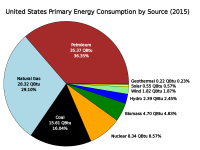The first object isn't much of an issue.
But that makes a lot of difference.
Solar-electric stations could hydrolize plenty,
First of all, hydrolysis is splitting of complex molecules using water,(often catalyzed by acid), not splitting water. For example hydrolysis of proteins (or polypeptides) to make free amino acids. Or making inverted syrup by hydrolyzing sucrose. It is the opposite of a dehydration reaction.
The word you want is electrolysis of water, splitting using electrical current.
Yes, technically you could use solar electricity to generate free hydrogen, but you'd need a lot of solar panels for it, especially if you intend to burn the hydrogen in an already inherently inefficient internal combustion engine, and being even more inefficient if it burns fuel it was not originally designed for.
A better approach would be, again, to use nukes as waste heat can be used to electrolyse water with less electrical energy input. The CO made from reducing CO
2 can be combined with the hydrogen to make synthetic,carbon neutral liquid fuels for applications where electric vehicles will remain impractical for a long time, such as airplanes.
5
it's the storage and distribution that present a problem. Especially distribution.
As I've already mentioned.
It could be addressed with a decentralized production system, but it's so much harder to wring profits out of such systems... there are people already trying to illegalize forms of energy independence.
I do not think energy independence should be "illegalized", but at the same time I do not think people putting solar panels on their homes to generate hydrogen in electrolysers in their garages to compress it to 300-600 atm to fuel their retrofitted ICE car is the solution. But I am sure more and more people will put solar panels on their homes to supply their own electricity needs, including charging their electric cars.
My point was not to present a ready solution, but to remind you that if a solution comes, it might be sudden and revolutionary.
I doubt it. We have plenty of solutions. That is not the problem. The problem is implementing all the solutions in a huge economy with trillions of dollars worth of already existing infrastructure. Maybe the first step should be developing countries. They have less installed infrastructure, and should be pushed to deploy carbon-free solutions wherever feasible. That would be a good use of development moneys from the developed world.

